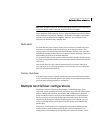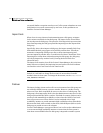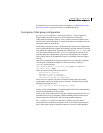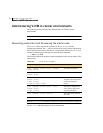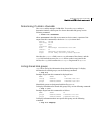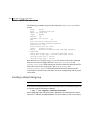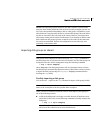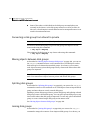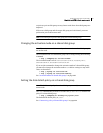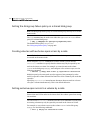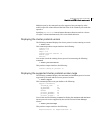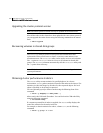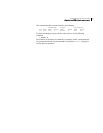
424 Administering cluster functionality
Administering VxVM in cluster environments
■ Some of the nodes to which disks in the disk group are attached are not
currently in the cluster, so the disk group cannot access all of its disks. In
this case, a forced import is unsafe and must not be attempted because it can
result in inconsistent mirrors.
Converting a disk group from shared to private
Note: Shared disk groups can only be deported on the master node.
To convert a shared disk group to a private disk group, first deport it on the
master node using this command:
# vxdg deport diskgroup
Then reimport the disk group on any cluster node using this command:
# vxdg import diskgroup
Moving objects between disk groups
As described in “Moving objects between disk groups” on page 203, you can use
the
vxdg move command to move a self-contained set of VxVM objects such as
disks and top-level volumes between disk groups. In a cluster, you can move
such objects between private disk groups on any cluster node where those disk
groups are imported.
Note: You can only move objects between shared disk groups on the master
node. You cannot move objects between private and shared disk groups.
Splitting disk groups
As described in “Splitting disk groups” on page 205, you can use the vxdg split
command to remove a self-contained set of VxVM objects from an imported disk
group, and move them to a newly created disk group.
Splitting a private disk group creates a private disk group, and splitting a shared
disk group creates a shared disk group. You can split a private disk group on any
cluster node where that disk group is imported. You can only split a shared disk
group or create a shared target disk group on the master node.
See “Moving objects between disk groups” on page 203.
Joining disk groups
As described in “Joining disk groups” on page 206, you can use the vxdg join
command to merge the contents of two imported disk groups. In a cluster, you




